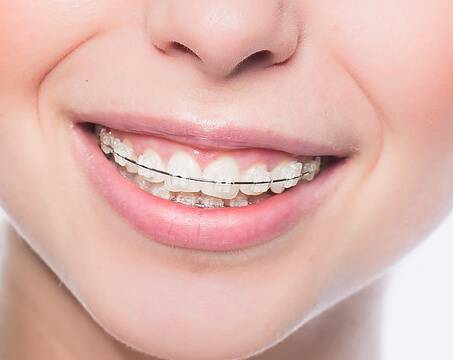Early Interceptive Orthodontic Treatment
Early Interceptive Treatment for Children
What is the difference between early interceptive orthodontic treatment and regular orthodontic treatment, and why might my child need early treatment? How will early treatment benefit my child in the long run?
These are just a few of the questions surrounding the topic of early orthodontic treatment for children. The American Association of Orthodontists recommends that children see an orthodontist at the age of 7, which is why we created our complimentary DOG Kids Club! Our main goal is to monitor a child's dental development and jaw growth in order to educate parents on what to expect in the future regarding orthodontic treatment.
Occasionally, a child would benefit from Early Interceptive treatment such as a palatal expander or an early phase of braces. Phase 1 or Early Interceptive Treatment can prevent a more serious orthodontic problem from occuring in the future or can help to make the second phase (Phase 2) of orthodontic treatment simpler.
More specifically, Early Treatment allows your orthodontist to:
- Correct and guide the growth of your child's jaws to encourage normal jaw relationships
- Help the permanent teeth come in straight
- Reduce protruding front teeth (ie. front teeth stick out)
- Regulate the width of the upper jaw using a palatal expander
- Correct malocclusions causing trauma or damage to the teeth and gums (underbites or crossbites)
- Prevent more serious jaw problems from occuring in the future
- Create more space for crowded teeth
- Potentially avoid the need for permanent tooth extractions or jaw surgery later in life
- Correct thumb sucking and other oral habits
- Help improve minor speech problems
- Eliminate any social issues related to the position of teeth
Here are a few things to look for that may mean your child needs to see an orthodontist:
- Early or late loss of baby teeth
- A hard time chewing or biting food
- Mouth breathing
- Finger sucking, thumb sucking, or other oral habit
- Crowded, misplaced, or blocked teeth
- Jaws that make sounds when opening and closing
- Teeth that come together abnormally, or do not come together at all
- Jaws and teeth that are not proportionate to the rest of the face
- Crowded front teeth around age seven or eight
- Underbite or overbite
- Crossbite
- Receeding (low) gums
What causes orthodontic problems, and how will early treatment benefit my child?
Orthodontic problems such as crowding of the teeth, too much space between the teeth, jaw growth problems, protruding teeth, and bad bites can be inherited or caused by injury to the mouth, early or late loss of baby teeth, or thumb-sucking habits.
Most children lose all their baby teeth by age 13, and by the end of their teen years, the jaw bones will harden and stop growing. Orthodontic procedures for adults often take more time and can involve tooth extraction or oral surgery. Receiving early orthodontic treatment as a child can help prevent the need for orthodontics as an adult.
If your child is between the ages of seven and eight and shows signs of needing orthodontic care, or if you have been directed by your family dentist to visit the orthodontist, please contact our practice and schedule an appointment. Our team will provide your child with an initial exam, and discuss with you the best steps to take toward caring for your child's smile.



